Homemade savoiardi, also known as Italian ladyfingers, are delicious and fun to make! These light and airy cookies are ideal for classic Italian desserts like tiramisu, or as the perfect treat to enjoy with a cup of coffee or tea!
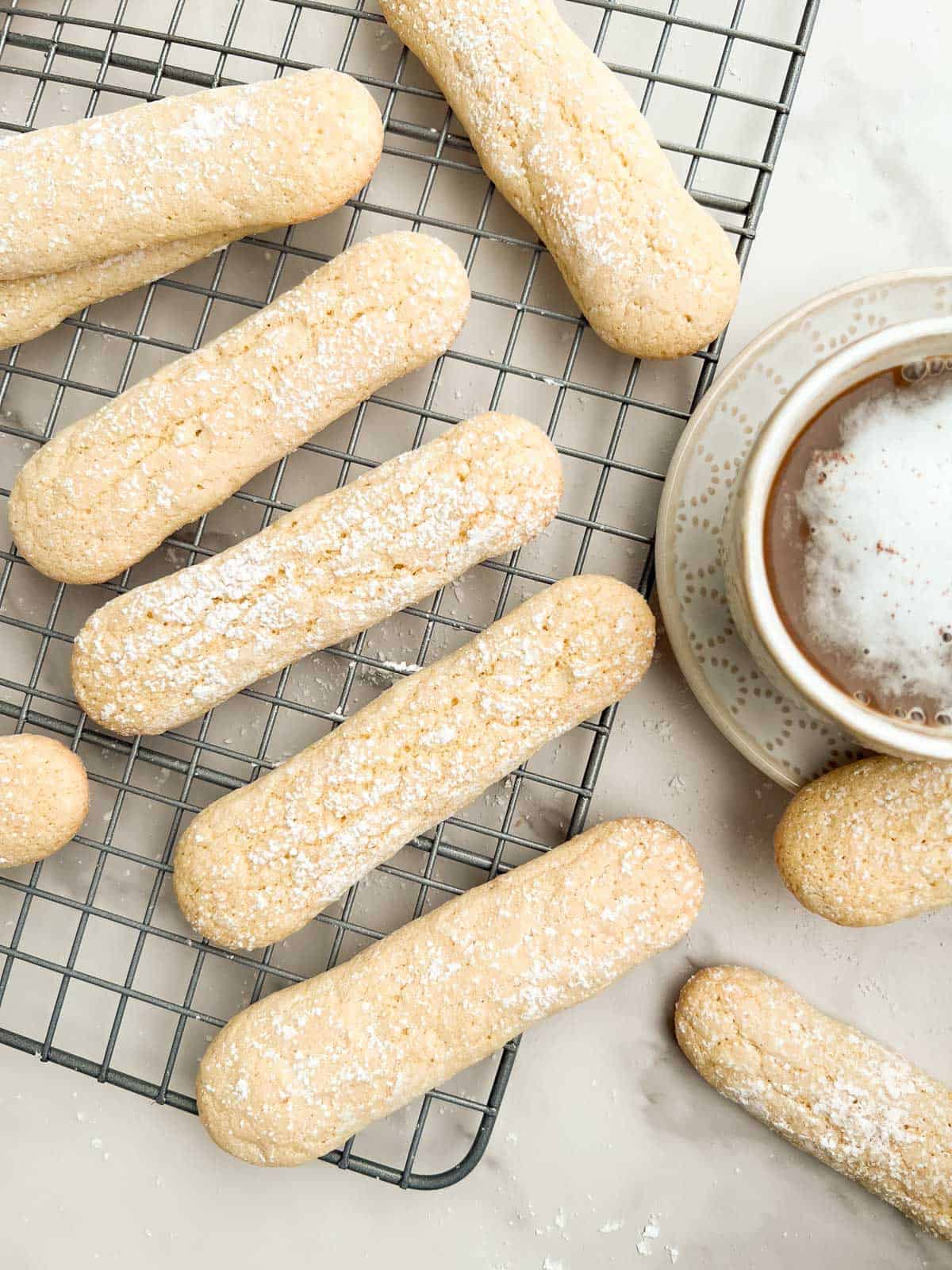
Save This Recipe! 💌
Savoiardi biscuits are the Italian version of ladyfingers, or sponge fingers - a meringue cookie that's light and sweet with a hint of rustic charm. I always make my own savoiardi, and once you try this recipe you'll see why! Homemade savoiardi have an unbelievable flavor and texture that cannot be found in the store bought version. And they're made with simple ingredients!
Savoiardi are surprisingly easy to make with the right guidance. This recipe has lots of tips for success, including how to make an easy template for even-sized cookies. There's no need to worry about perfection here - the charm of homemade savoiardi lies in their rustic, handmade appearance. No two cookies look exactly the same!
These savoiardi are perfect for homemade tiramisu, like my delicious pumpkin tiramisu, with this recipe yielding enough for a two-tiered tiramisu in a 9x13-inch pan. For a crowd-pleasing dessert, I love to serve these savoiardi alongside other Italian cookies like pignoli cookies, walnut biscotti, and pumpkin biscotti. If you're looking for more classic Italian treats, you'll love this pumpkin panna cotta, chocolate budino, and espresso ice cream!
Jump to:
Ingredients
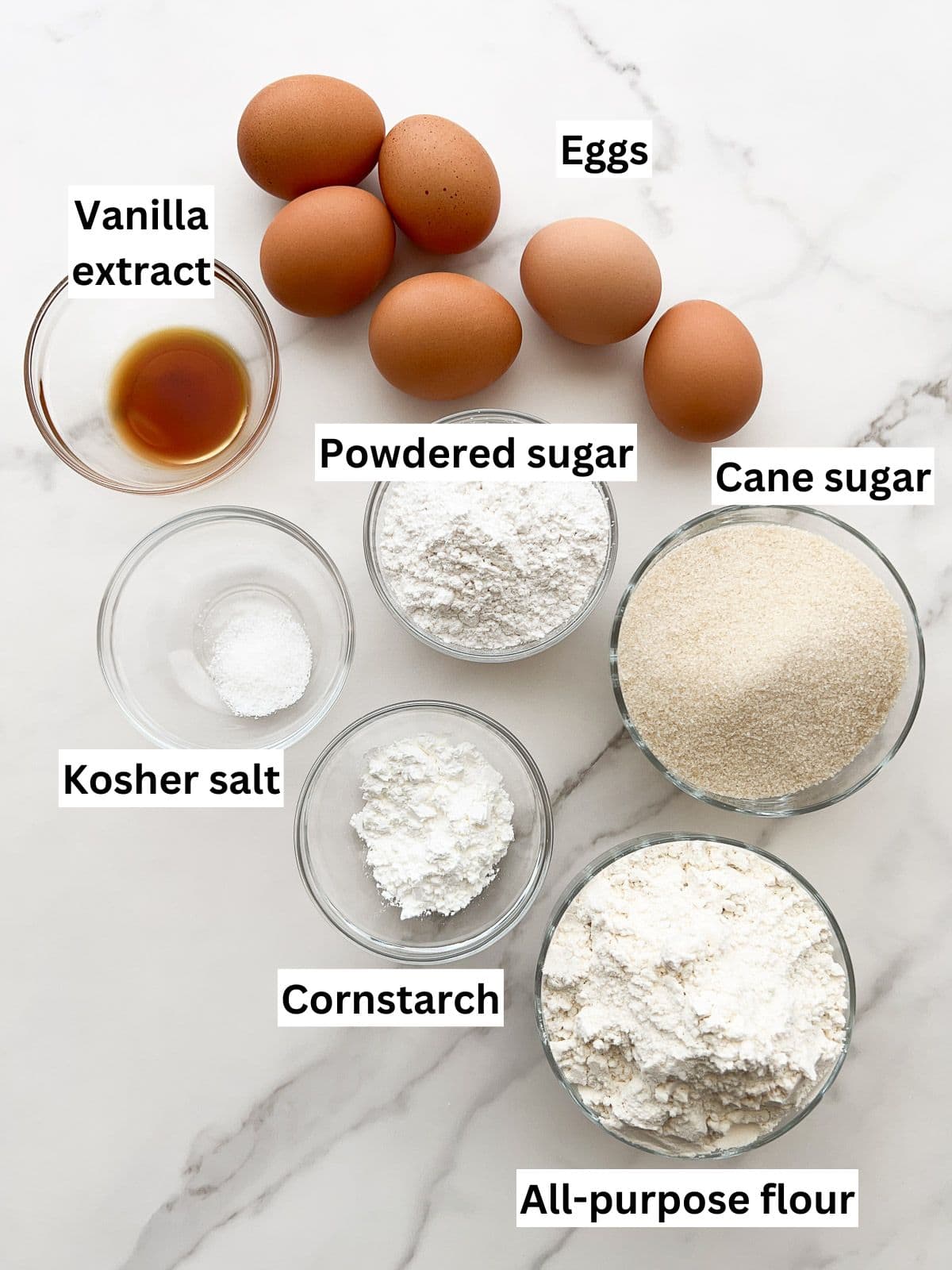
Ingredient Notes
- Eggs: this recipe uses whipped egg whites to create a light and spongy savoiardi texture, while the yolks add richness and structure to the batter. It's best to use room temperature eggs so they whip up well and don't spread too much in the oven. Before starting the recipe, it's important to separate the egg yolks and whites carefully. Not even a tiny bit of yolk should be in the whites, as this will prevent the whites from whipping properly. Since the eggs are the star of this recipe, I love using pasture-raised eggs because they can have a richer flavor and higher fat content that enhances the fluffiness of the ladyfingers!
- All-purpose flour: it's important to measure the flour properly so the savoiardi are light and airy. I recommend using a food scale to measure the flour in grams. If you don't have one, you can use the "spoon and level method" with a measuring cup. Simply spoon the flour into the measuring cup, but do not pack it down. Then use the back of a knife to level off the top of the cup.
See recipe card for quantities.
Substitutions and Variations
- Use granulated sugar instead: you can substitute the cane sugar with granulated sugar.
- Use almond extract: if you prefer an almond flavored savoiardi, you can use almond extract instead of vanilla extract.
- Add citrus: to brighten up the flavors, you can add a bit of lemon or orange zest to the batter.
- Add spices: deepen the flavor by adding a pinch of cinnamon, nutmeg, or cardamom to the batter. This makes savoiardi that's perfect for a holiday tiramisu or a standalone festive treat!
Instructions
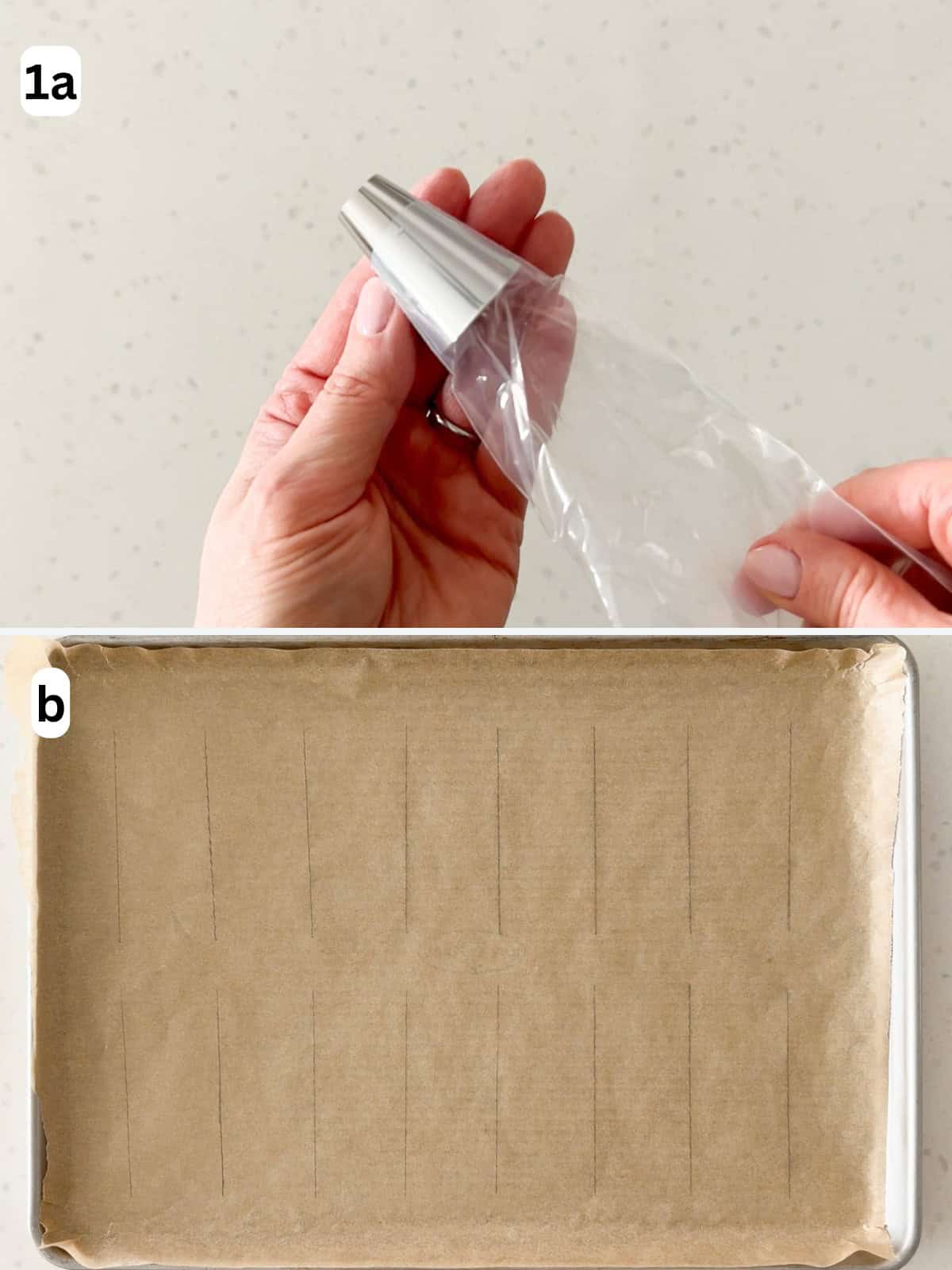
Step 1: preheat the oven to 350°F (177°C). Fit a large piping bag with a ½-inch round tip (I use a Wilton 1A) (image 1a). Or you can cut a ½-inch opening in a plastic food storage bag. Line 3 to 4 baking sheets with parchment paper. Make templates for the savoiardi by using a food-safe pencil to mark 4-inch lines on the parchment, spaced 2-inches apart. Then flip the parchment so the markings don't touch the dough (image 1b). If you don't have multiple baking sheets, create enough templates for 50 cookies and reuse a baking sheet between batches.
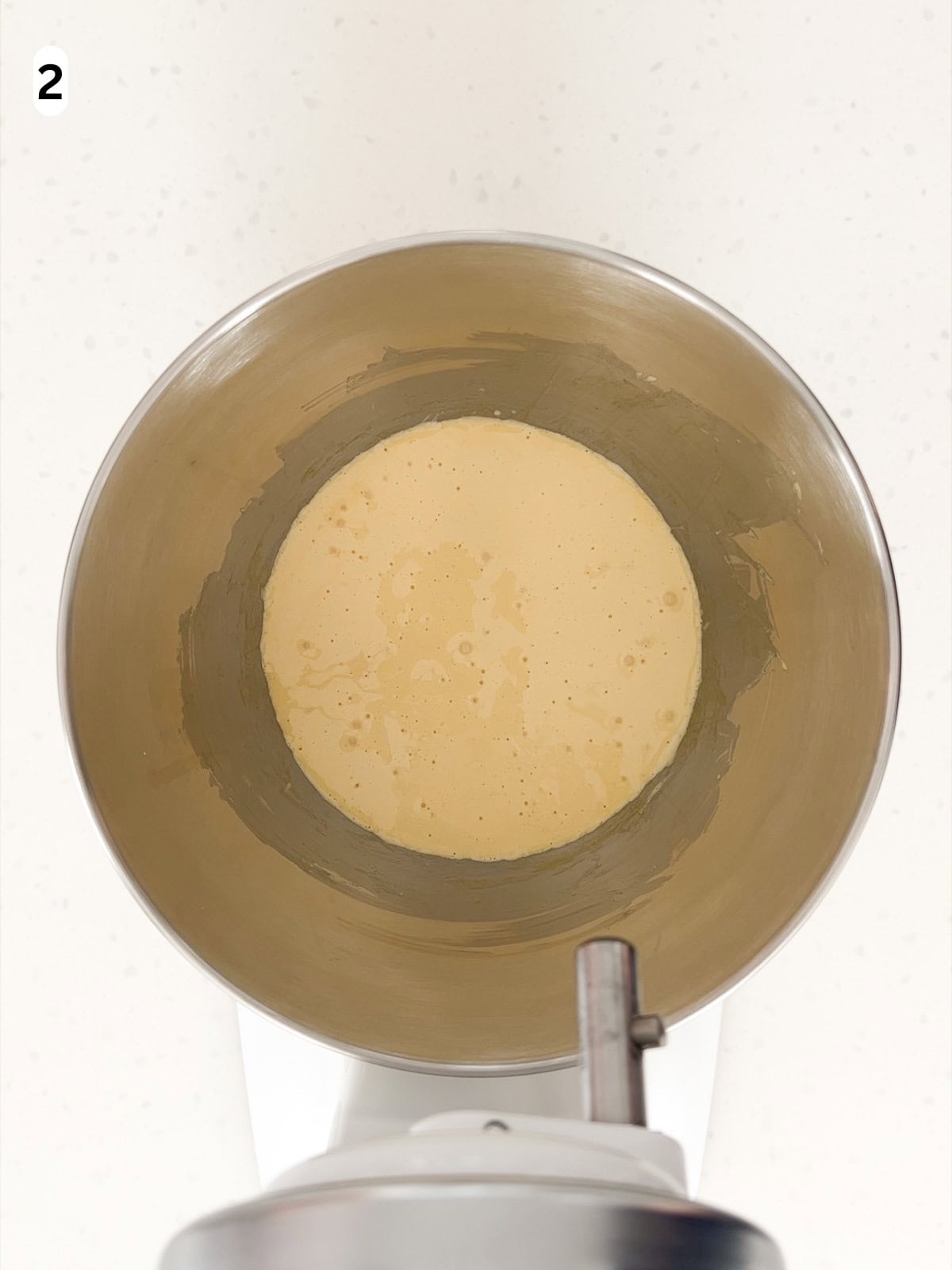
Step 2: add the egg yolks, half the cane sugar, vanilla extract, and kosher salt in a large mixing bowl. Beat on medium-high speed using a handheld mixer or a stand mixer with a whisk attachment. When done, the egg yolk mixture should be pale and fluffy, which takes around 3 to 4 minutes (image 2). Set aside.
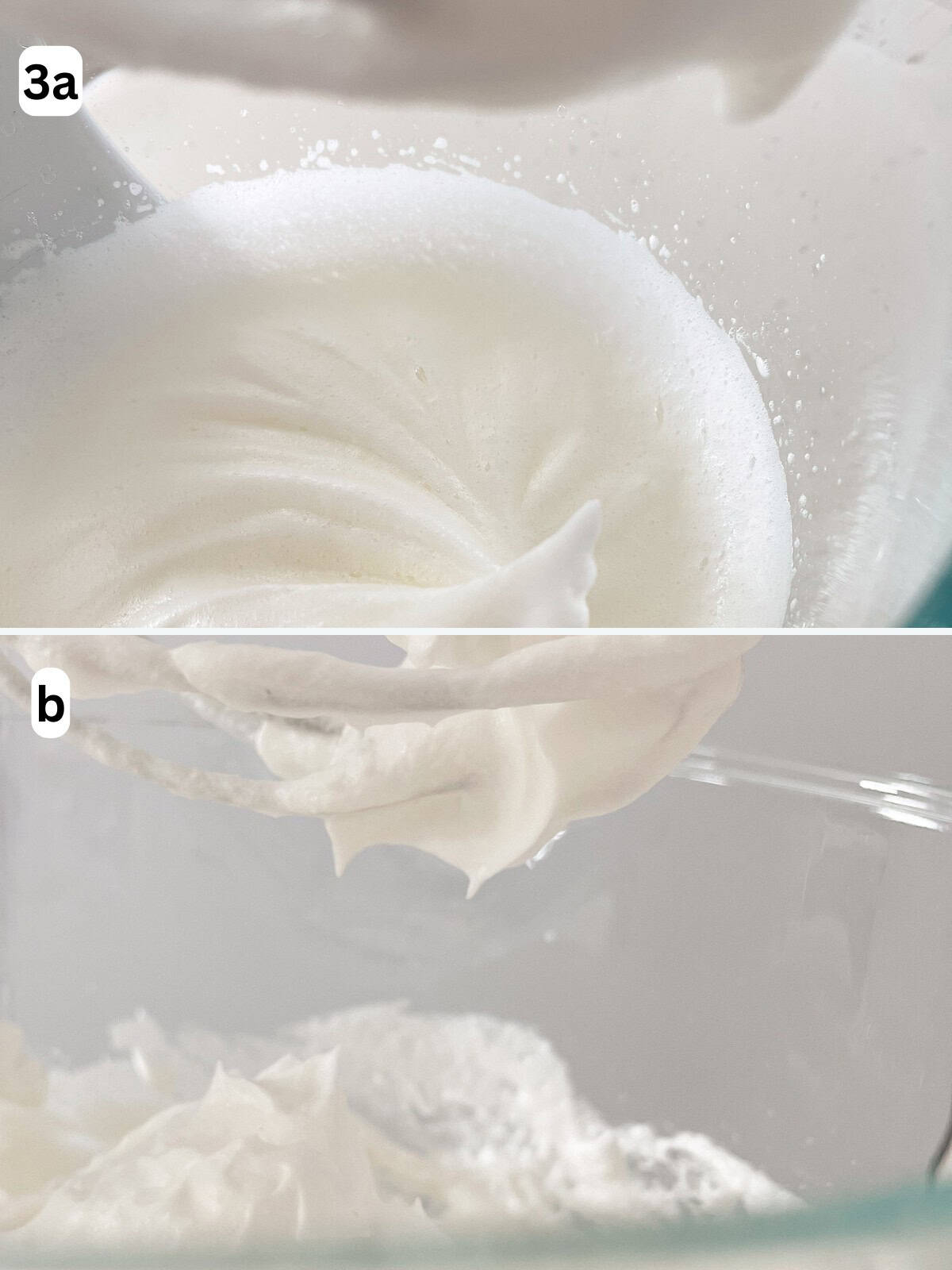
Step 3: place the egg whites in a separate, large mixing bowl. Using clean beaters, beat the egg whites on high speed until soft peaks form where the peaks briefly hold their shape before gently folding over (image 3a). While still beating, gradually add the remaining half of the cane sugar until fully dissolved. When done, the egg whites should be thick, shiny, and form stiff peaks that hold their shape (image 3b). This takes about 5 minutes.
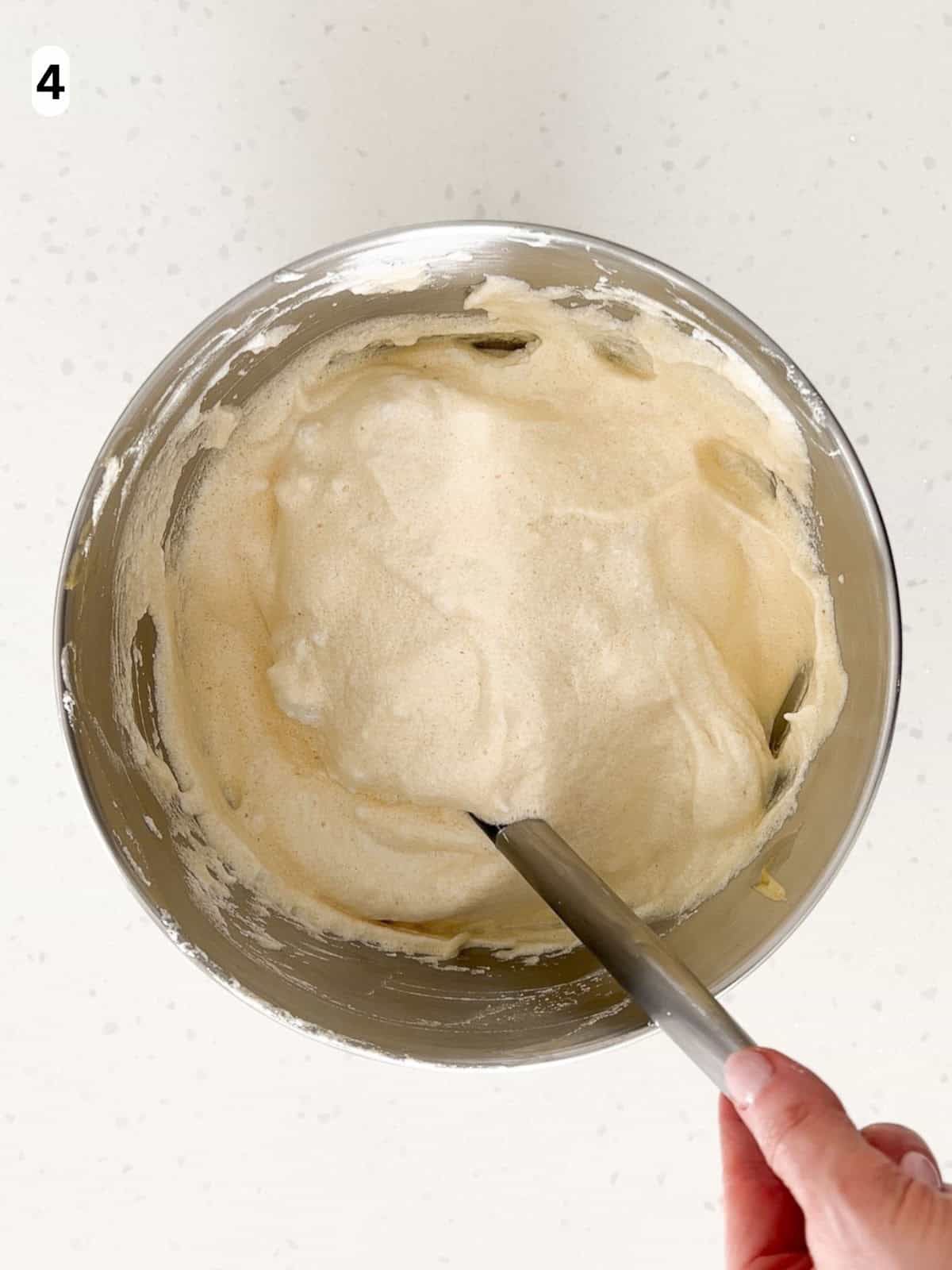
Step 4: briefly hand whisk the egg yolk mixture before folding in the egg whites, to make sure it's still well mixed. Then use a spatula to gently fold the egg whites into the yolk mixture by hand, in three batches. Be careful to not deflate the egg whites. When done, the mixture should be just combined (image 4).
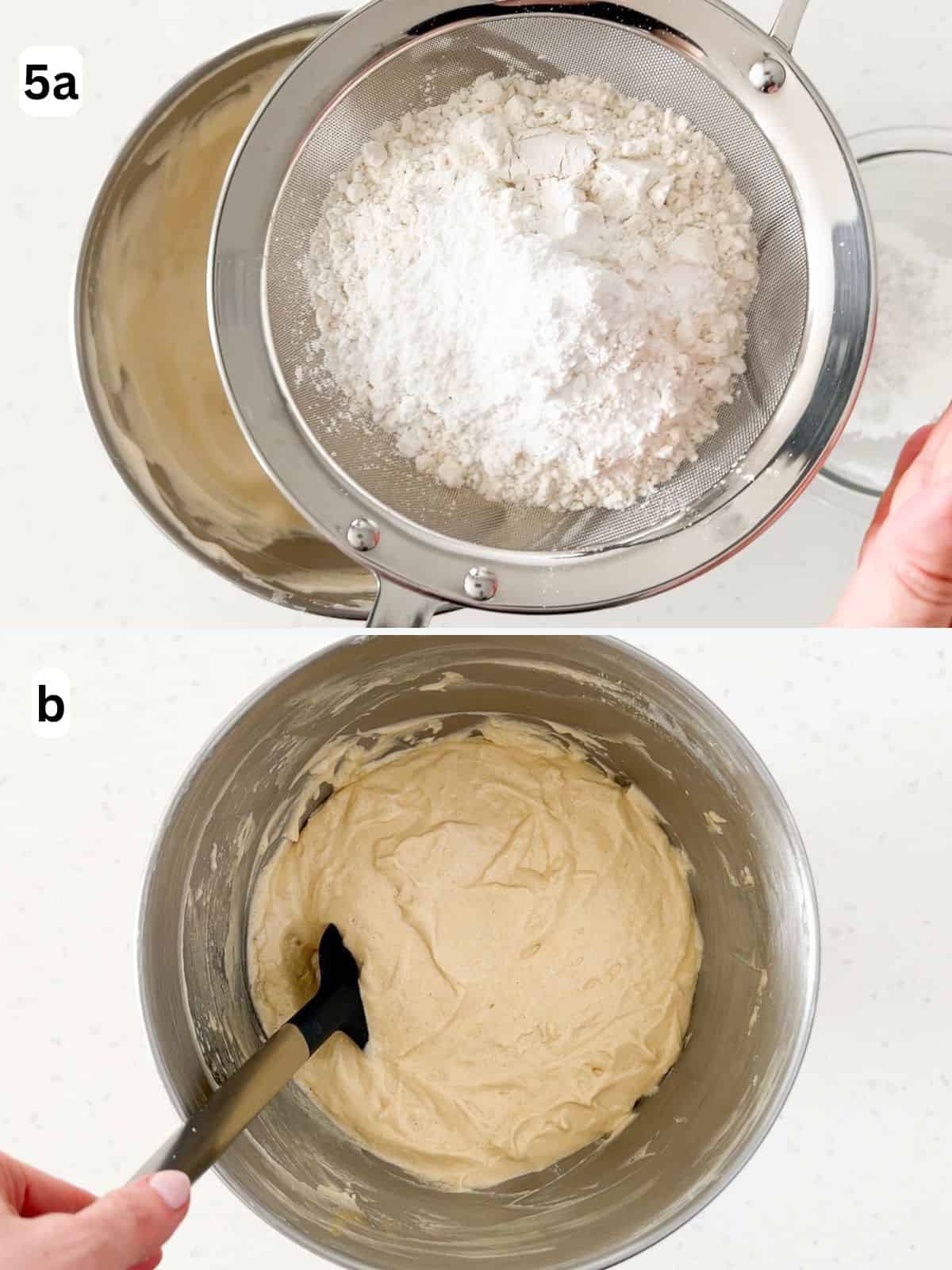
Step 5: sift the flour and cornstarch into the egg mixture in three additions (image 5a). Fold gently by hand, using a spatula, until there are no more streaks of flour (image 5b). Be careful not to over-mix.
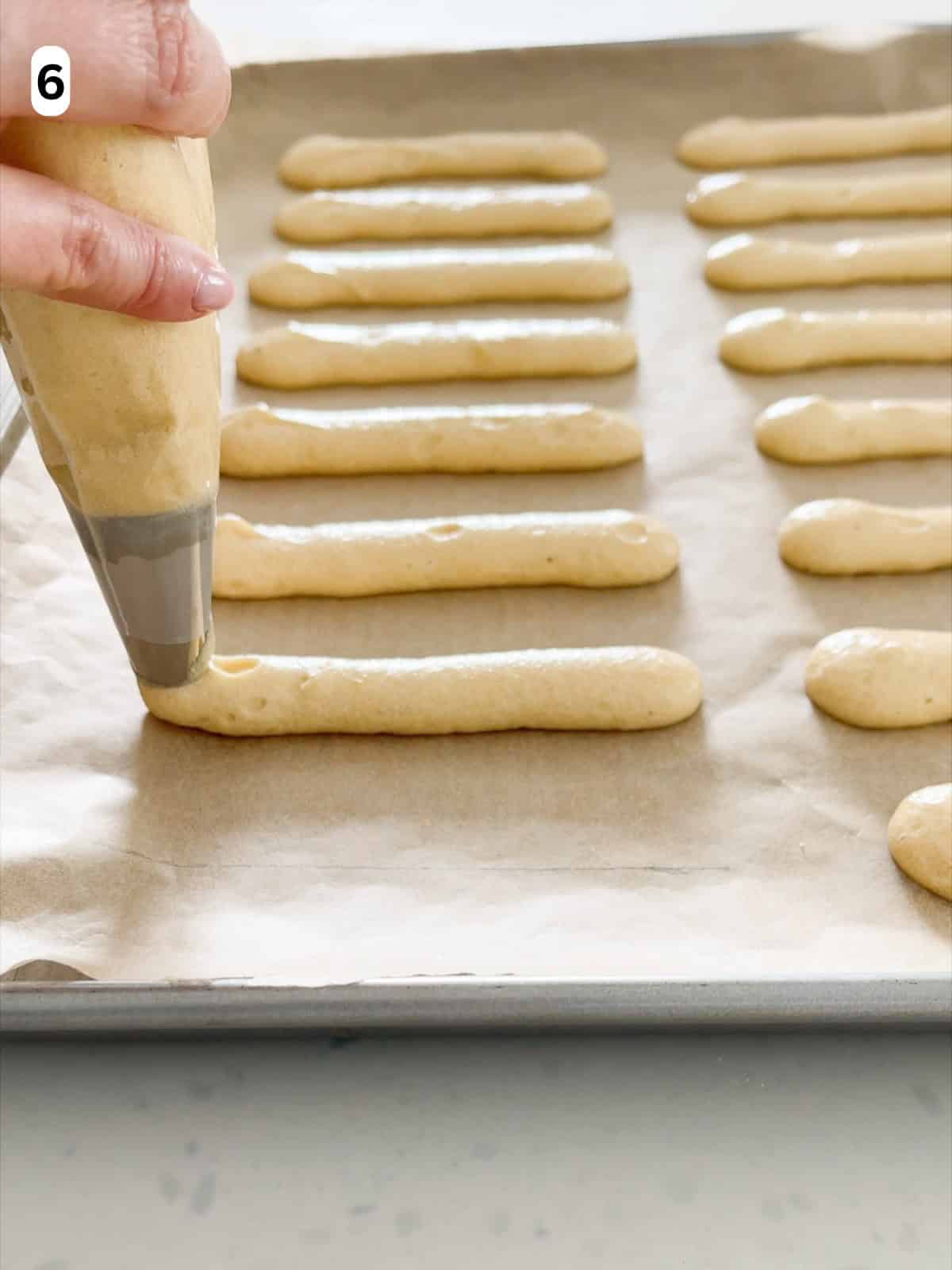
Step 6: transfer the batter into the prepared piping bag. Pipe the batter into strips on the prepared baking sheets, using the templates you made in Step 1 as a guide. The strips should be 4-inches long by ½-inch wide. They should be spaced about 2-inches apart so they don't spread into each other as they bake (image 6).
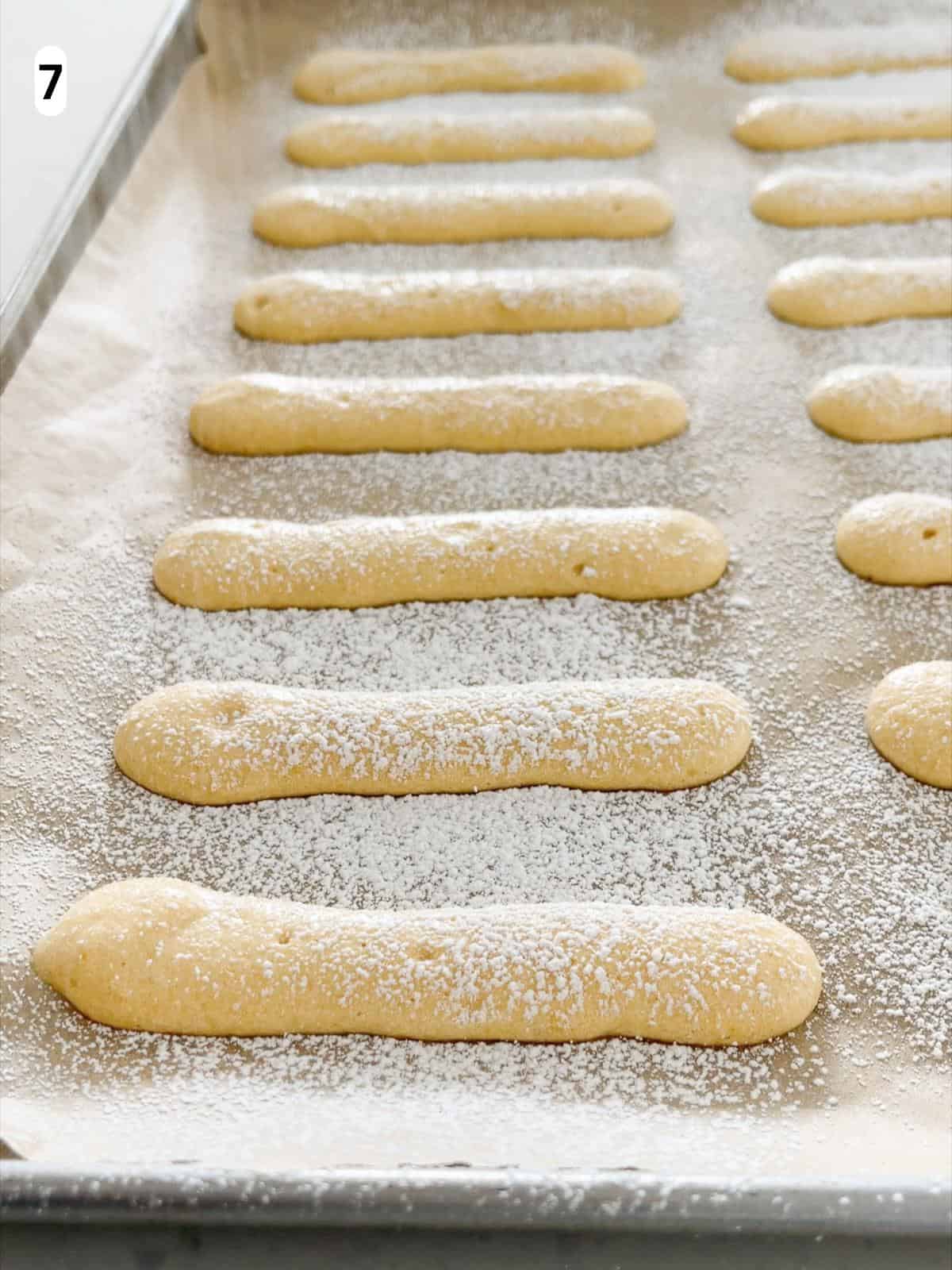
Step 7: generously dust each strip of batter with powdered sugar. Let sit for a minute and dust again (image 7). This helps to give the savoiardi a crisp top.
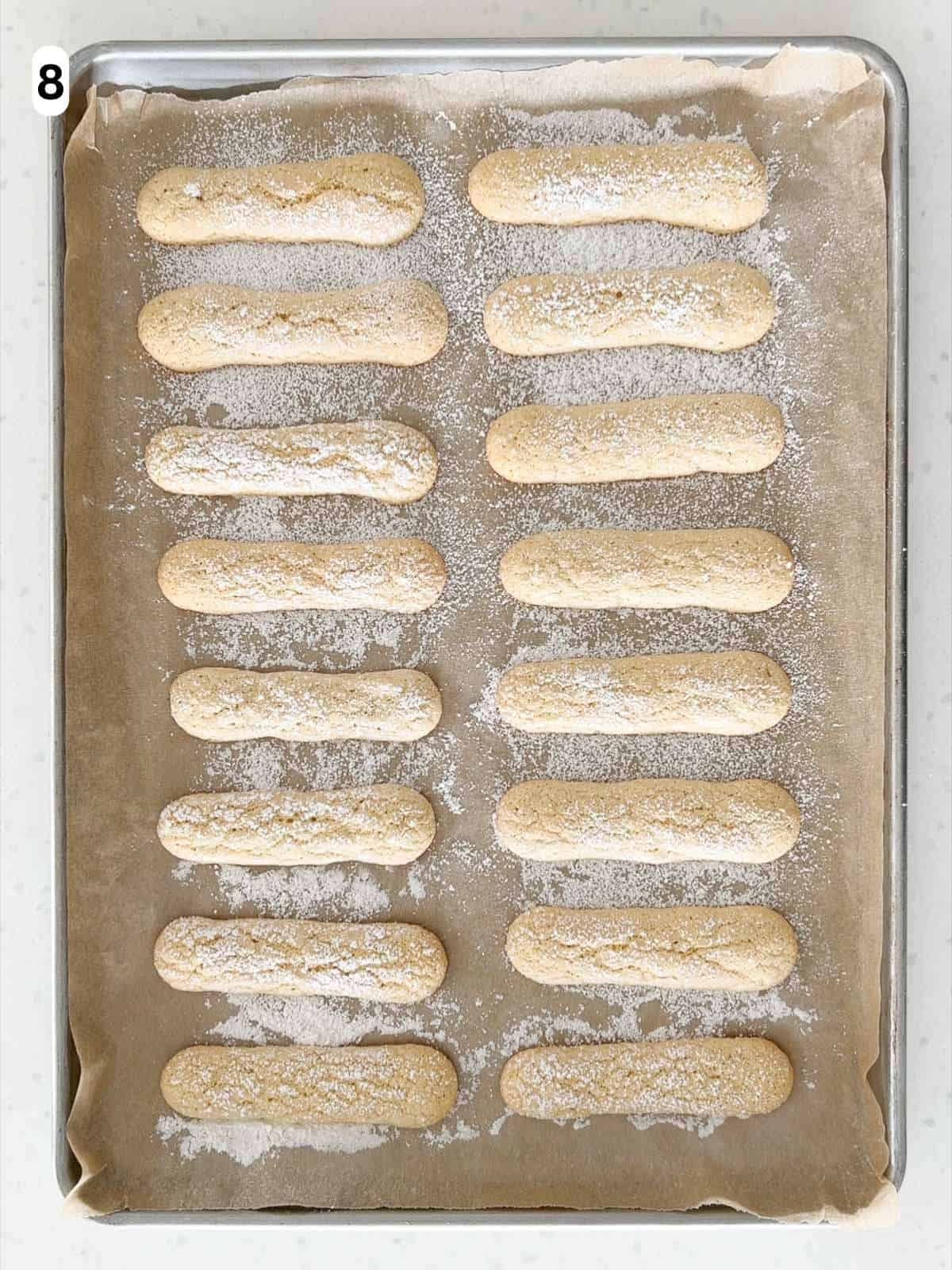
Step 8: place the baking sheet on the middle rack of the oven and bake for 11 to 12 minutes, or until the savoiardi are lightly golden (image 8). Repeat with the remaining batches. Let cool on the baking sheets for at least 10 minutes, then transfer them to a wire rack to cool completely. Dust with more powdered sugar if desired, serve, and enjoy!
Equipment
- Piping bag: I use a large, 16-inch piping bag to fit all the batter.
- Piping tip: a ½-inch piping tip works best. I use a Wilton 1A round decorating tip. If you don't have one, you can snip off the end of a piping bag or a food storage bag, creating a ½-inch opening.
Storage
- Room temperature: baked savoiardi can be stored in an airtight container at room temperature for up to 1 week. Make sure they are fully cooled before storing to prevent moisture from softening them.
- Refrigerator: although you can store the savoiardi in an airtight container in the refrigerator for up to 1 week, they may absorb moisture and lose their crispness faster. For this reason, I prefer to store them at room temperature for shorter periods, or in the freezer for a longer length of time.
- Freezer: you can store the savoiardi in an airtight container in the freezer for up to 3 months. I recommend placing parchment paper between the layers of cookies to prevent sticking. When ready to enjoy, they will thaw quickly at room temperature. They will be a bit softer after freezing.
- How to freshen up soft savoiardi: regardless of the storage method, homemade savoiardi will soften over time. To restore crispness, arrange them in a single layer on a baking sheet and place them in a 200°F (93°C) oven for about 10 to 15 minutes. Keep a close eye on them to prevent browning.
Check out this helpful USDA Leftovers and Food Safety guide for more information on how to store leftovers safely.
Expert Tips
- Create a template for the savoiardi to make the piping step easy. Line a baking sheet with parchment paper and use a food-safe pencil to mark 4-inch lines. Ensure they are at least 2 inches apart to prevent spreading as they bake. On a standard 13x18-inch baking sheet, I fit about 16 savoiardi. Since this recipe yields around 50 cookies, I usually make 3 to 4 templates to accommodate the whole batch. Remember to flip over the parchment paper so the dough doesn't touch the markings, but you can still see the lines through the paper.
- Be gentle when folding the egg whites into the yolks to avoid deflating them. Use a spatula to fold the egg whites in small batches, using a light, circular motion from the bottom of the bowl to the top. Avoid vigorous stirring, which can knock out the air that gives savoiardi their signature light and airy texture.
FAQ
Homemade savoiardi should be stale before using them in a tiramisu to ensure they keep their shape after being soaked in espresso. There are two methods I use to stale my savoiardi. The first is to leave them in a paper bag at room temperature overnight. The second method is to arrange them in a single layer on a baking sheet and place them in a 200°F (93°C) oven for about 10 to 15 minutes to dry out, watching carefully to prevent them from browning. For a delicious tiramisu recipe, check out my pumpkin tiramisu!
Take your piping tip and drop it into the bottom of the piping bag. Use scissors to mark the bag just below the halfway point of the tip (image 1 below). Then remove the tip and cut the marked area off (image 2). Push the tip back through the bottom of the bag (image 3) and you're ready to go! For a quick video tutorial, see my recipe video that shows how to fit a piping bag with a tip.
If you are not using a tip, you can simply cut a ½-inch opening off the end of a piping bag or a plastic food storage bag.
Since the primary structure of savoiardi relies heavily on eggs, the flavor stands out, especially when fresh from the oven. As the cookies rest and cool, the egg flavor mellows as moisture redistributes and the flavors blend. To avoid an overly strong egg flavor, make sure the savoiardi are baked long enough for the egg proteins to fully set, which helps reduce the intensity of the egg flavor. The cookies should be lightly golden when taken out of the oven.
Related
Looking for more Italian desserts? Try these delicious recipes:
Pairing
These are my favorite treats to serve with savoiardi (ladyfingers):
Did you make this recipe? Leave a star rating and comment below! Subscribe to my newsletter for more Italian recipes straight to your inbox!
Recipe

Savoiardi (Ladyfingers)
Save This Recipe! 💌
Ingredients
- 6 large eggs (room temperature, yolks and whites separated)*
- 1 cup cane sugar (divided into two, ½ cup portions)*
- 2 teaspoons vanilla extract *
- ½ teaspoon kosher salt
- 1½ cups all-purpose flour *
- 2 tablespoons cornstarch
- ¼ cup powdered sugar
Instructions
- Preheat oven, prepare the piping bag and baking sheets: preheat the oven to 350℉ (177℃). Fit a large piping bag with a ½-inch round tip (like a Wilton 1A). Or you can cut a ½-inch opening in a plastic food storage bag. Then line 3 to 4 baking sheets with parchment paper. Make templates for the savoiardi by using a food-safe pencil to mark 4-inch lines on the parchment, spaced 2 inches apart. Then flip the parchment so the markings won't touch the dough. If you don't have 3 to 4 baking sheets, create enough templates for 50 cookies and reuse a baking sheet between batches.
- Whisk the egg yolk mixture: add the egg yolks, ½ cup of cane sugar, vanilla extract, and kosher salt in a large mixing bowl. Beat on medium-high speed using a handheld mixer or a stand mixer with a whisk attachment. When done, the egg yolk mixture should be pale and fluffy, which takes about 3 to 4 minutes. Set aside.
- Whisk the egg whites: place the egg whites in a separate, large mixing bowl. Using clean beaters, beat the egg whites on high speed until soft peaks form, where the peaks briefly hold their shape before gently folding over. While beating, gradually add the remaining ½ cup of sugar until fully dissolved. When done, the egg whites should be thick, shiny, and form stiff peaks that hold their shape. This takes about 5 minutes.
- Combine the egg whites and egg yolks: briefly hand whisk the egg yolk mixture before folding in the egg whites, to ensure it's well mixed. Then, using a spatula, gently fold the egg whites into the yolk mixture in three batches by hand. Be careful to not deflate the egg whites. Fold until the mixture is just combined.
- Add the flour and cornstarch: sift the flour and cornstarch into the egg mixture in three additions. Fold gently by hand, using a spatula, until there are no more streaks of flour. Be careful not to over-mix.
- Pipe the batter: transfer the batter into the prepared piping bag. Pipe the batter into strips on the prepared baking sheets, using the templates you made in Step 1 as a guide. The strips should be 4 inches long by ½-inch wide, with about 2 inches of space between so they don't spread into each other as they bake.
- Dust with powdered sugar: generously dust each strip of batter with powdered sugar. Let sit for a minute and dust again. This helps to give the savoiardi a crisp top.
- Bake: place the baking sheet on the middle rack of the oven and bake for 11 to 12 minutes, or until the savoiardi are lightly golden. Repeat with the remaining batches. Let cool on the baking sheets for at least 10 minutes, then transfer them to a wire rack to cool completely. Dust with more powdered sugar if desired, serve, and enjoy!
Video
Notes
- Eggs: it's important to completely separate the egg whites and yolk. If the whites have even a tiny bit of yolk in them, they will not whip up properly.
- Cane sugar: you can substitute with the same amount of granulated sugar.
- Vanilla extract: substitute with the same amount of almond extract if desired.
- All-purpose flour: for light and airy savoiardi, it's important to measure the flour exactly. I prefer to measure in grams, using a food scale. If you don't have one, use the "spoon and level" method with a measuring cup. To do so, spoon the flour into the measuring cup, but do not pack it down. Then use the back of a knife to level off the top of the cup.
- Add citrus: for bright, citrus flavor, add a teaspoon of lemon or orange zest to the batter. Do so in Step 2, when whisking the egg yolk mixture.
- Add spices: you can add warm spices to enhance the flavor, sifting them into the batter in Step 5, alongside the flour and cornstarch. I like adding ½ teaspoon of cinnamon and ¼ teaspoon each of nutmeg and cardamom. It's perfect when making savoiardi for a holiday tiramisu or a standalone festive treat!
- Fitting the piping bag with a tip: if you've never fit a piping bag with a tip before, I have tutorials for you! See the FAQ section of the blog post, where I answer the question "How do I prepare a piping bag?" For a quick video tutorial, see my recipe video that shows how to fit a piping bag with a tip.
- Equipment: large 16-inch piping bag; ½-inch piping tip (like a Wilton 1A).
- Storage: baked savoiardi can be stored in an airtight container at room temperature for up to 1 week. Although you can also store them in the refrigerator for up to 1 week, they may lose their crispness faster. For longer periods of storage, you can keep them in an airtight container in the freezer for up to 3 months. Place parchment paper between the layers to avoid sticking. They will thaw quickly at room temperature.
- How to restore crispness to soft savoiardi: regardless of the storage method, savoiardi will soften over time. To make them crisp again, arrange them in a single layer on a baking sheet and place them in a 200°F (93°C) oven for about 10 to 15 minutes. Watch carefully so they don't brown. This is also a great way to firm up savoiardi before using them in tiramisu. For a delicious tiramisu recipe, check out my pumpkin tiramisu!
Nutrition
The provided nutrition and storage information is estimated. Accuracy is not guaranteed.
See our Disclaimer for more information.
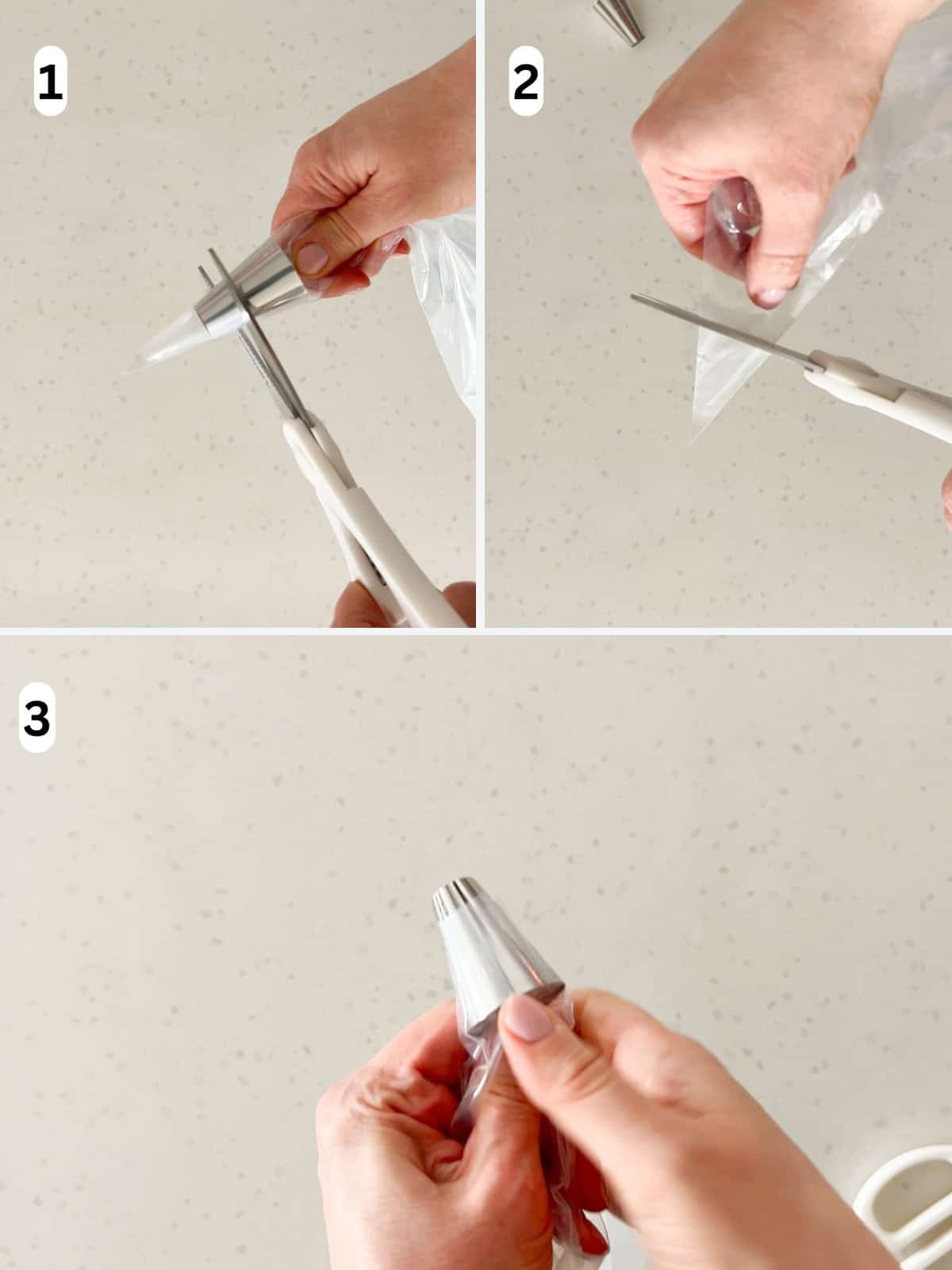
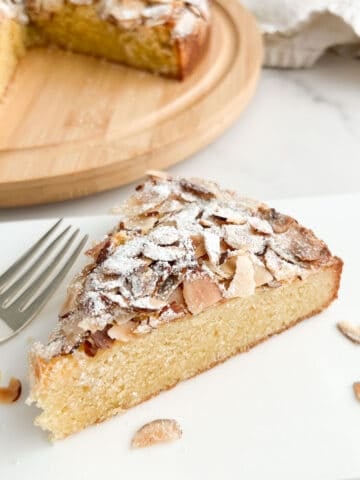
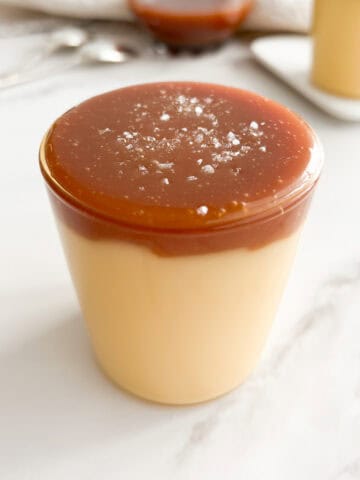


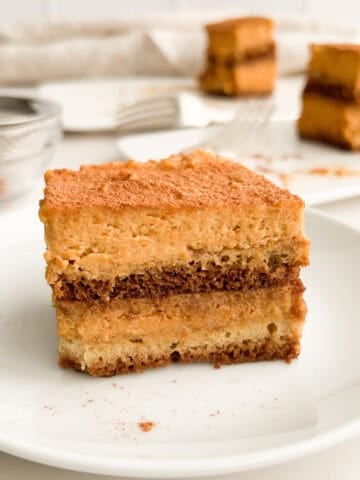


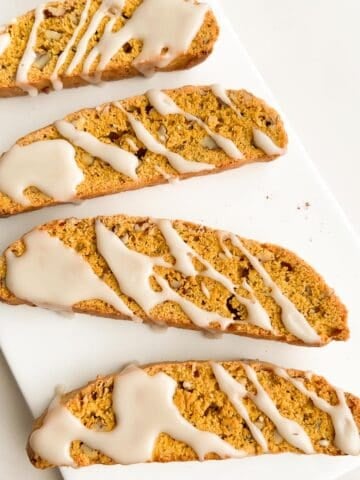




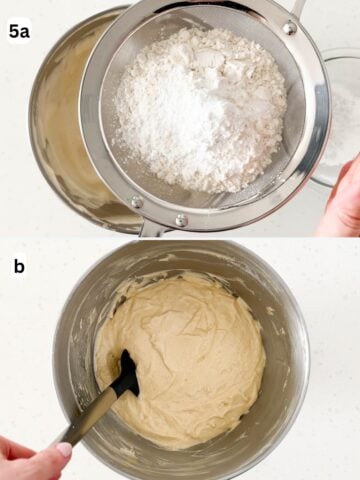

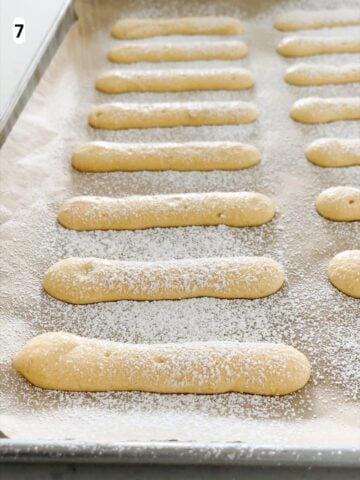
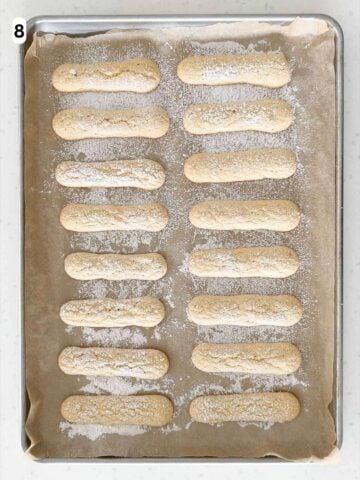
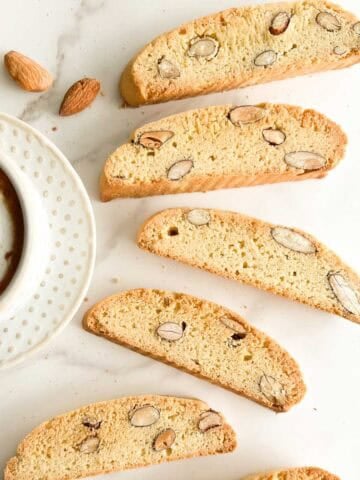


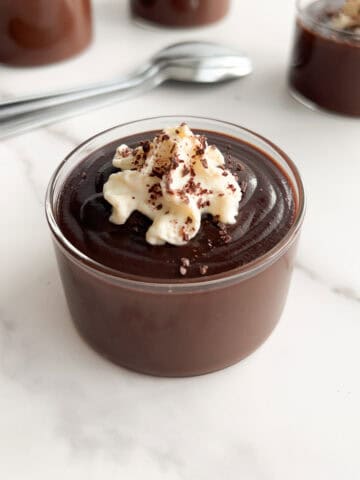
Maria D'Errico says
I hope you enjoy these savoiardi as much as I did in making this recipe for you! I really enjoy these cookies because they are light and perfectly sweet. I love how the recipe is made with simple ingredients and yields enough for a large tiramisu. I'd love to hear your thoughts!